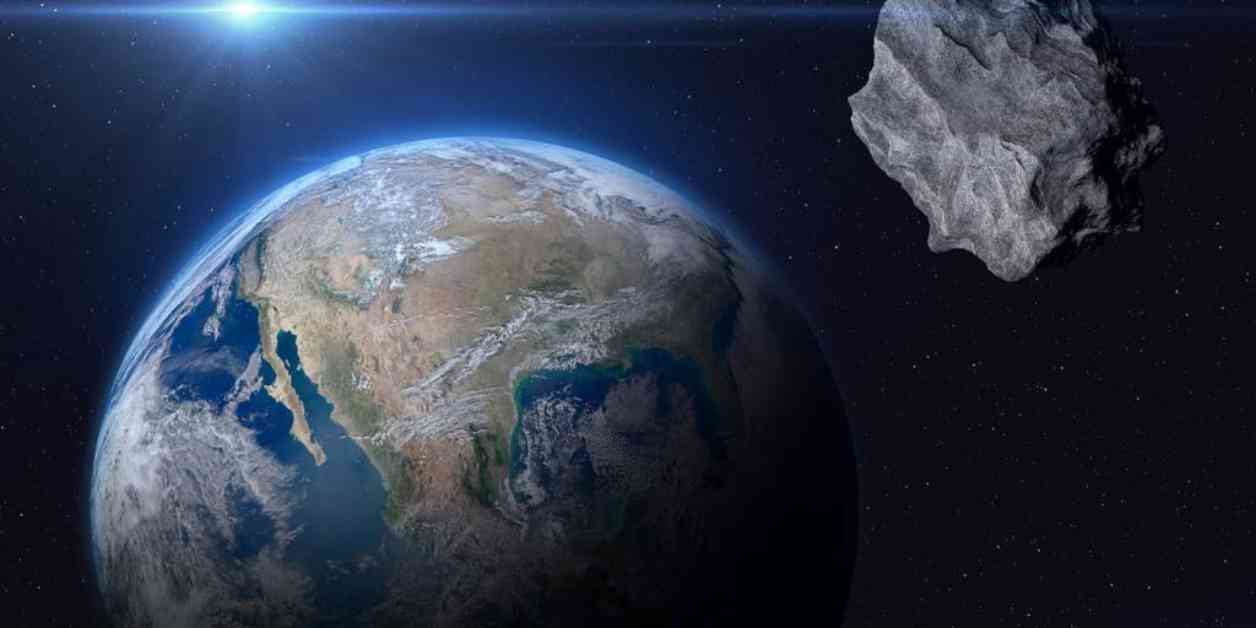NASA has identified a potentially hazardous asteroid that is currently approaching Earth. The National Aeronautics and Space Administration (NASA) is closely monitoring the asteroid, named 2024 ON, as it makes its way past our planet. This stadium-sized asteroid is 350 meters long by 180 meters wide, making it larger than previously estimated.
A “stadium-sized” asteroid like 2024 ON is a rare occurrence, with NASA reporting that an asteroid of this size coming this close to Earth only happens every five to ten years. The last time a large meteor entered Earth’s atmosphere was in Russia in 2013, and Earth has not been hit by a meteor of 2024 ON’s size since prehistoric times.
Despite its size and proximity to Earth, NASA assures the public that there is no chance of the asteroid colliding with our planet. Davide Farnocchia, a navigation engineer at NASA’s Jet Propulsion Laboratory, explained that the asteroid would need to be within a couple of hundred miles to pose any real concern. NASA constantly monitors the trajectory of asteroids not just for the immediate future, but also for the next hundred years, and in the case of 2024 ON, there is no possibility of a collision in that timeframe.
In addition to 2024 ON, NASA has identified four other asteroids that will pass by Earth over the next two days. These asteroids will not come nearly as close as 2024 ON, with distances ranging from 1.1 to 3.9 million miles away from Earth. Three of the asteroids are roughly the size of a house, measuring around 51 feet in diameter.
One of the asteroids, named 2013 FW13, measures around 510 feet in diameter and is set to pass by Earth on Wednesday. NASA’s Asteroid Watch Dashboard tracks these close approaches, providing information on the date of closest approach, approximate object diameter, relative size, and distance from Earth for each encounter.
2024 ON was traveling at around 8.8 kilometers per second on Tuesday morning, which is nearly 20,000 miles per hour. The dashboard displays the next five Earth approaches to within 4.6 million miles, with objects larger than about 150 meters that can approach Earth within this distance classified as potentially hazardous objects.
While the concept of a stadium-sized asteroid passing relatively close to Earth may sound alarming, it is important to remember that NASA’s monitoring and tracking systems are highly advanced. The agency is constantly keeping an eye on near-Earth objects to ensure the safety of our planet.
As 2024 ON continues on its path away from Earth, scientists and researchers will continue to study its trajectory and characteristics. Understanding the movements of asteroids like 2024 ON is crucial for developing strategies to mitigate potential threats from space objects in the future.
Overall, while the presence of a “potentially hazardous” asteroid like 2024 ON may cause some concern, NASA’s assurance of no collision in the next hundred years should provide some comfort. The agency’s dedication to tracking and monitoring near-Earth objects demonstrates its commitment to protecting our planet from potential threats from space.
In conclusion, the identification of a stadium-sized asteroid approaching Earth serves as a reminder of the importance of continued research and monitoring of near-Earth objects. With NASA’s advanced tracking systems and dedicated team of scientists, we can rest assured that our planet is in good hands when it comes to potential asteroid threats.




